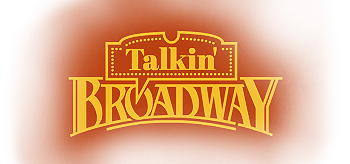|
Regional Reviews: Washington, D.C. My Fair Lady Also see Susan's review of You for Me for You
One problem with staging My Fair Lady is that just about everyone has seen either a previous production or the Oscar-winning 1964 film version. These viewers may come in with some expectations (for example, that the aristocratic women of the "Ascot Gavotte" wear only black and white) that this production will upend. The important thing is that the leads can and do succeed with Alan Jay Lerner's lyrics and book, adapted from George Bernard Shaw's Pygmalion, and Frederick Loewe's sumptuous melodies. For example, Benedict Campbell is not the snobbish, peremptory Henry Higgins made famous by Rex Harrison, nor the emotionally remote intellectual Leslie Howard played in the 1938 film version of Pygmalion. This Higgins has the petulance and the outbursts, but he's also surprisingly vulnerable, leading to an unexpected take on the last few scenes. Campbell also has a resonant singing voice, not necessary for the role but pleasant and welcome. Manna Nichols is a lovely and lovable Eliza Doolittle, making her songs soar while also nailing the comedy and finding her way among the shifting accents. (The fact that she is of Asian descent makes no difference: Smith's program notes mention the bubbling stew of races, ethnicities, and nationalities living in London in 1912.) James Saito is capable as Alfred P. Doolittle, if not quite the galvanizing figure he should be in his major scenes. He is a fine singer and dancer, but he doesn't dominate the stage when surrounded by the grungy men and overly painted women of the chorus. Thomas Adrian Simpson is a solid and charming presence as Colonel Pickering; Catherine Flye steals all her scenes as Henry's indomitable mother; and Nicholas Rodriguez plays Freddy Eynsford-Hill as a bit of an overgrown puppy (he leaps over furniture and crouches like a panther at Eliza's feet). Smith does understand the importance of nuance, which means that minor characters and members of the ensemble sometimes catch the viewer's attention with tiny reactions and priceless facial expressions. Daniel Pelzig's choreography incorporates a variety of influences, from the decorous waltz at the Embassy Ball to the clog dancers and acrobatic buskers who entertain in Covent Garden. Donald Eastman's scenic design consists mostly of easily movable set pieces and, for one memorable moment, a trap door that, when opened, releases clouds of stage smoke. Judith Bowden's costumes are packed with fascinating detail: ragged, multi-colored, and picturesque for the lower classes, stiff and elegant for the wealthy, and eye-catching for Eliza. The one odd note is that Higgins attends the ball in black tie and what appears to be a dressing gown. Arena Stage
|
